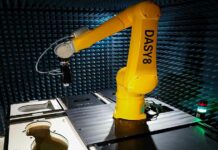The automatic traction control system that Volvo Construction Equipment uses in its off-road articulated haulers has now been adopted by Volvo Trucks.
Volvo’s automatic traction control activates the drive on the front axle automatically when the rear wheels lose traction. Claimed benefits are improved manoeuvrability, lower fuel consumption and less machine wear.
Volvo Trucks now becomes the first truck manufacturer in the world to offer automatic engagement of all wheel drive on construction trucks, it says. The system is now standard in the Volvo FMX with driven front axle.
Jonas Odermalm, construction segment manager at Volvo Trucks, explained: “Many drivers connect front-wheel drive or differential lock in good time before a difficult section of terrain, in order to avoid getting stuck. Volvo Automatic Traction Control engages the front wheel drive when in motion, and only for the short time that it is really needed.”
The system has software connected to the wheel speed sensors that detect and control wheel drive. When a rear wheel starts to slip, the power moves automatically to the front wheels without the truck losing torque or speed. A dog clutch activates the front-wheel drive in just half a second. The clutch is lighter and has fewer moving parts than a traditional solution with permanent all-wheel drive. If the driver encounters particularly rough ground, then it is possible to manually lock the other differentials at both front and rear.




























